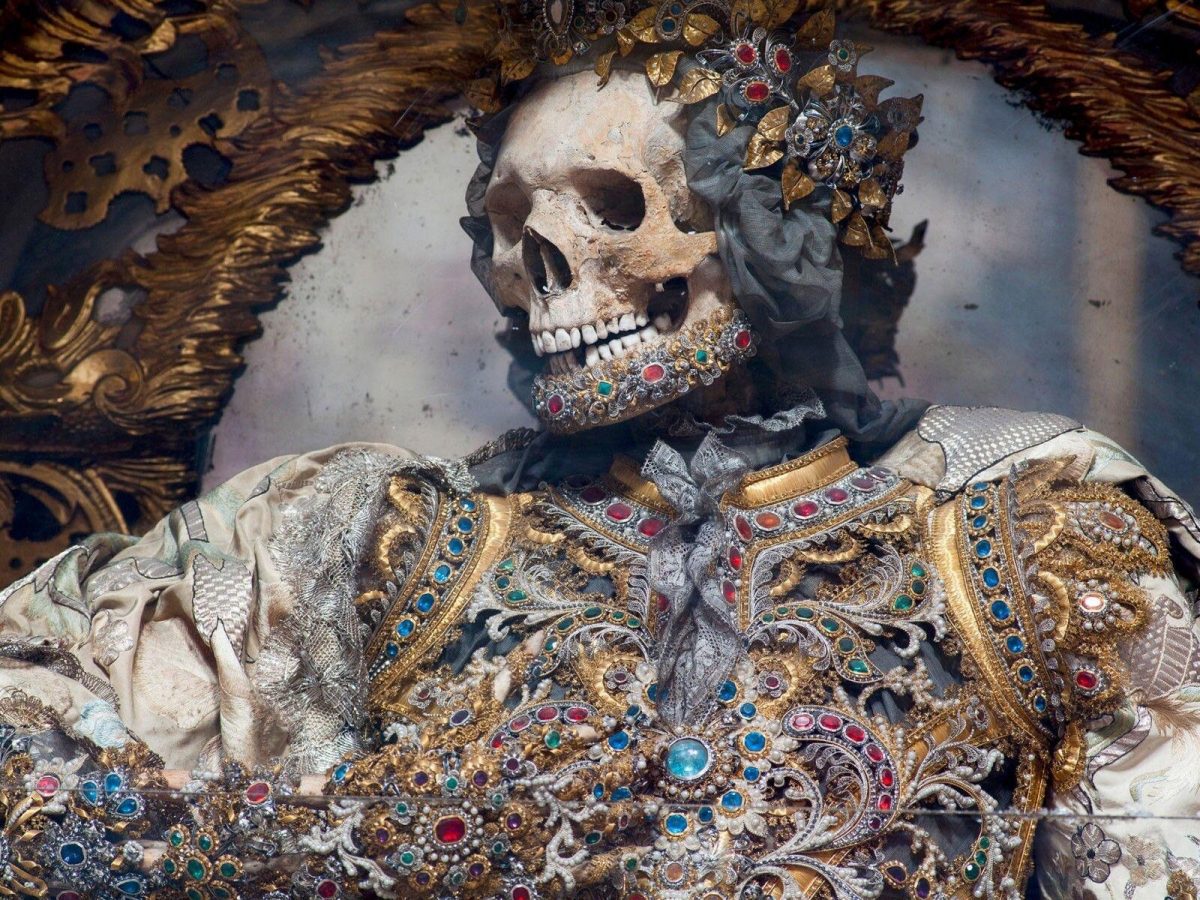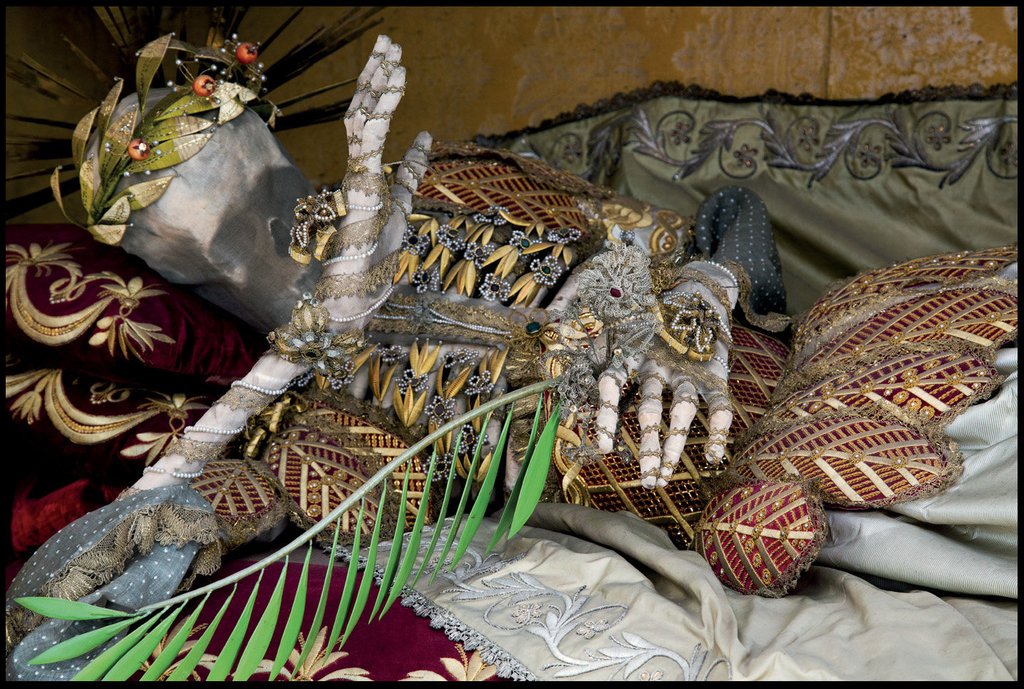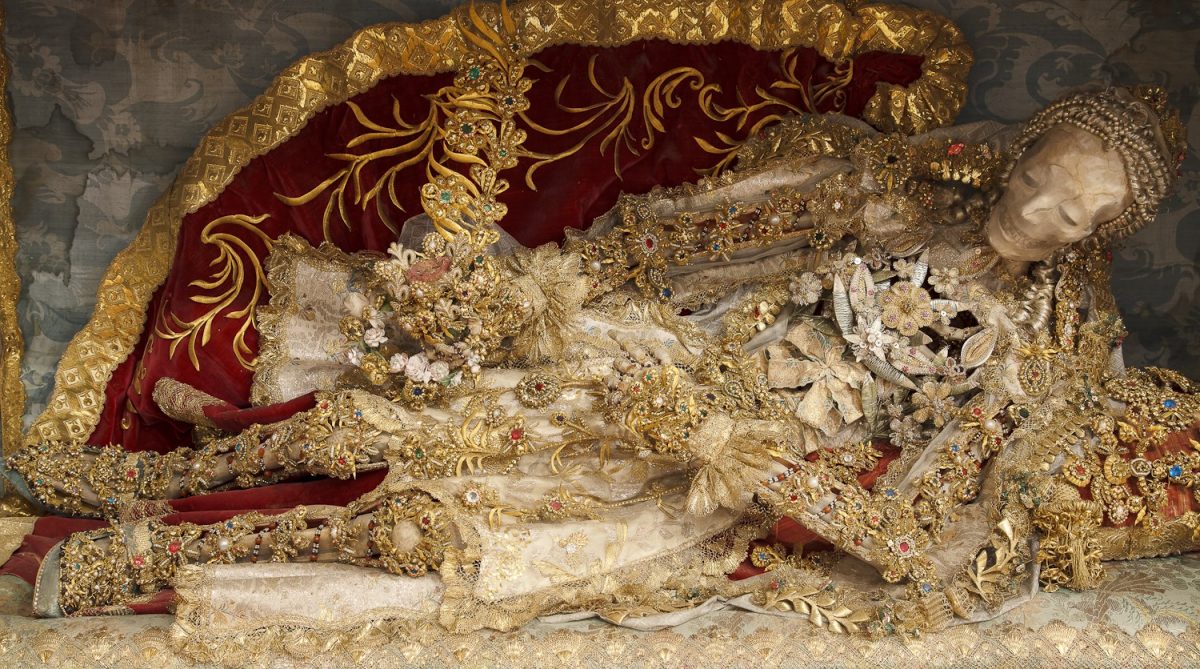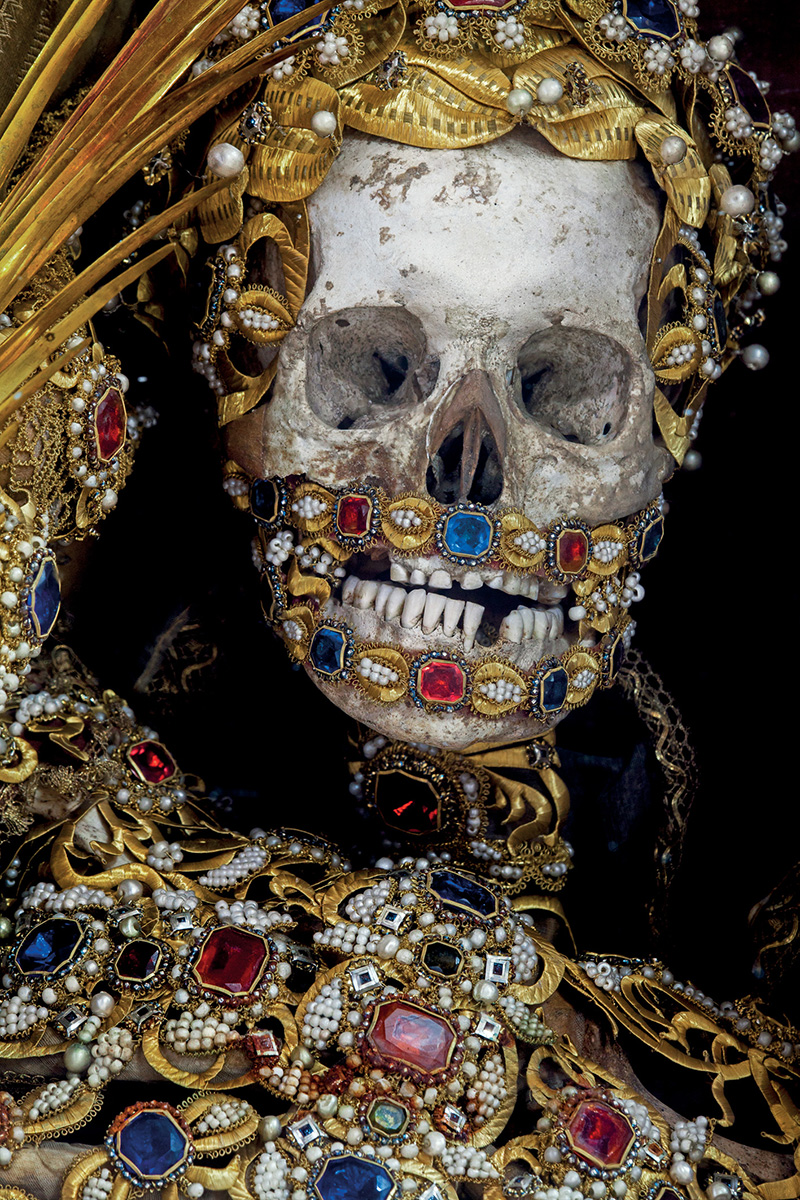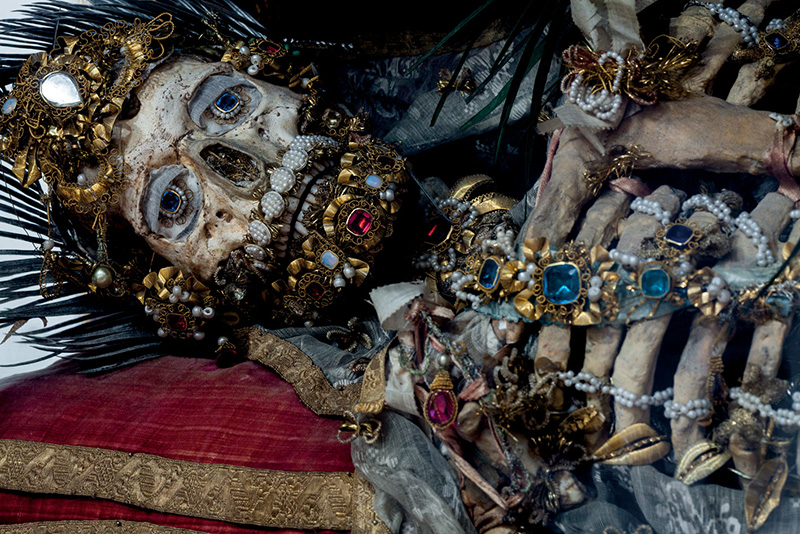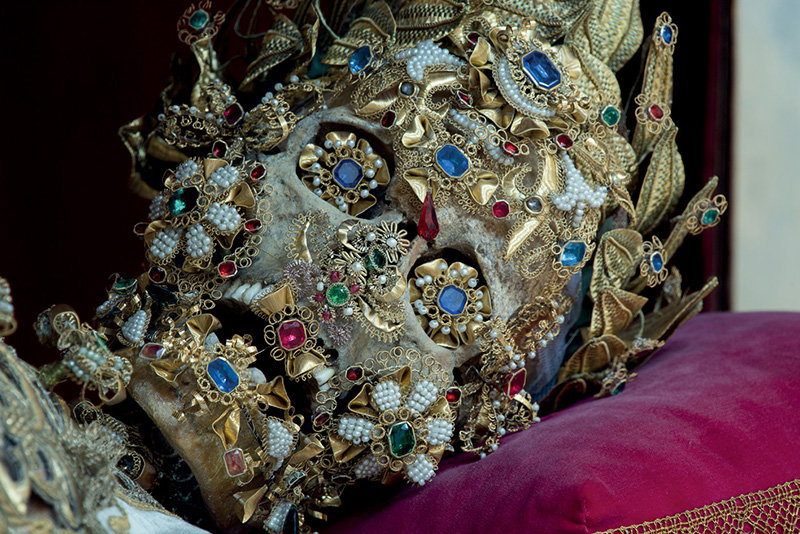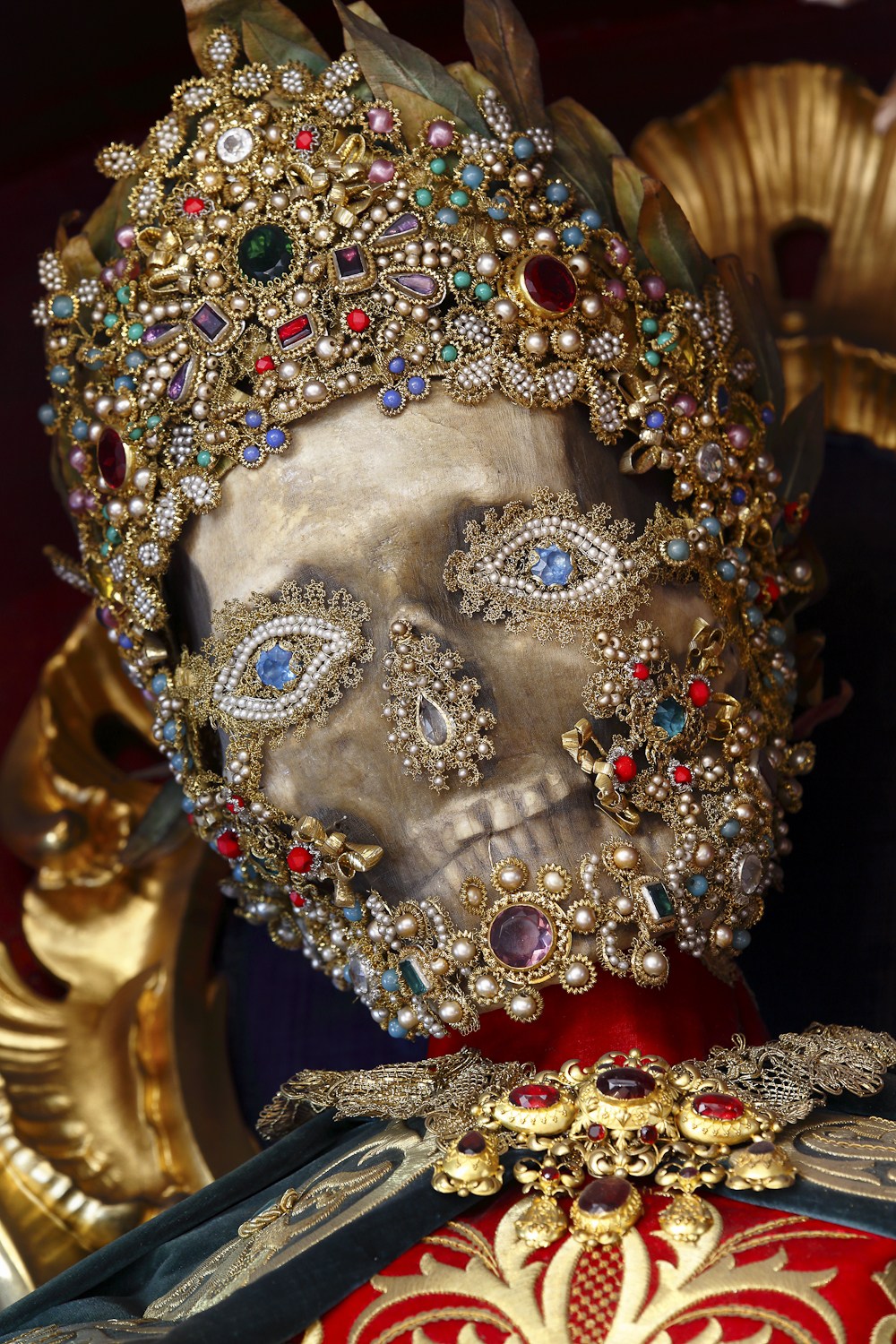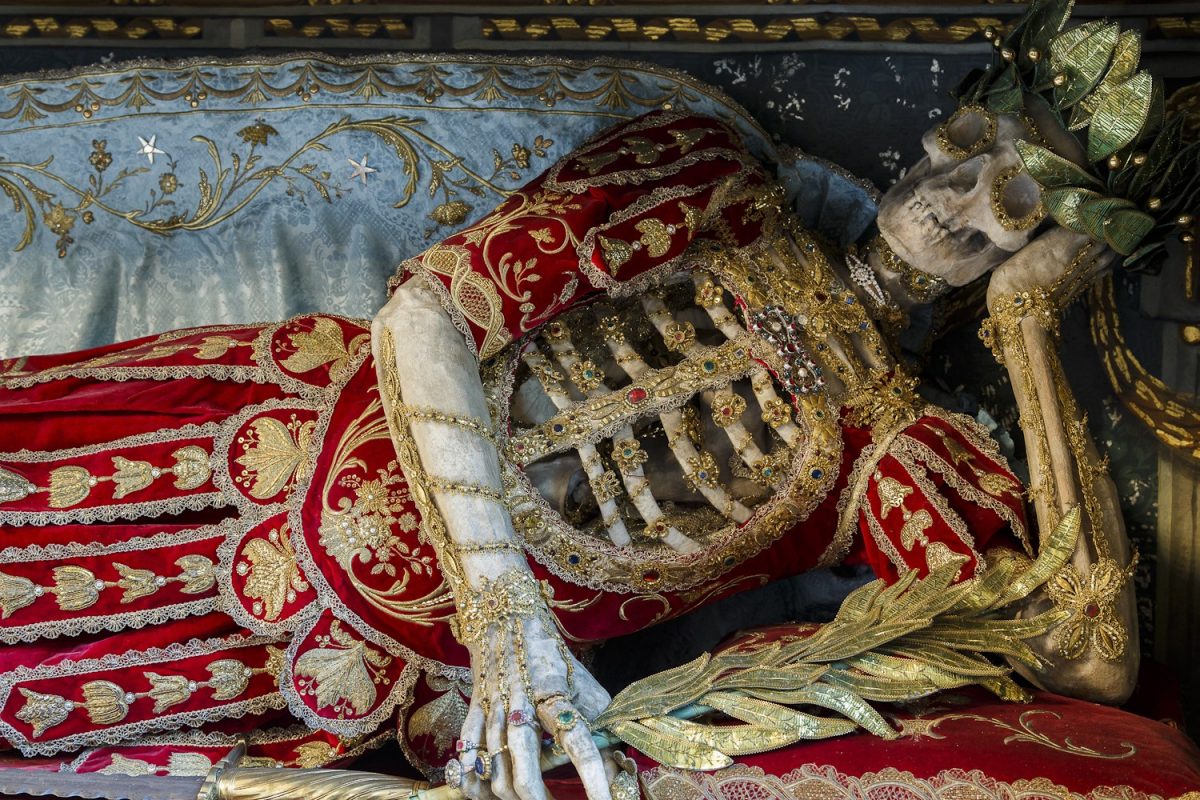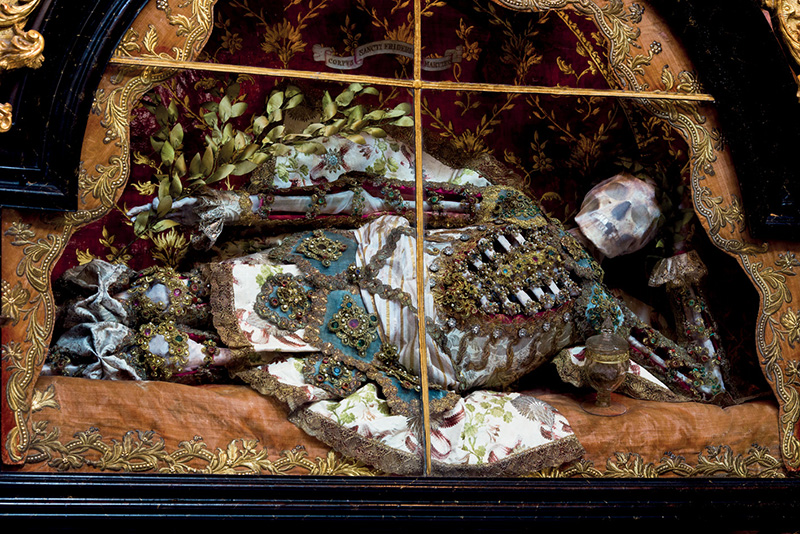In his book Heavenly Bodies: Cult Treasures and Spectacular Saints from the Catacombs, Paul Koudounaris records the bejewelled skeletons of Christian martyrs found in the catacombs under Rome in the late 16th century.
Sent to Catholic churches and religious houses in German-speaking Europe to replace relics destroyed in the wake of the Protestant Reformation, these skeletons were reassembled and richly adorned with precious jewels and costumes.
Venerating human remains is not to everyone’s tastes. Pouring wax over skulls and bones to form a kind of skin adds a ghoulish air. But death has never looked more beautiful.
It provided a new and important form of propaganda: these skeletons, shipped northward and then decorated in this elaborate and opulent way, were a means to say that the greatest glory is reserved for those who remain true to the faith, and are willing to make the ultimate sacrifice in its name. In effect, the extravagant decoration of these skeletons provided a symbol of the glory that those who remained faithful to the Catholic church could expect in heaven.
– Paul Koudounaris
They were members of a society, they had roles to play. People gave them something — devotion — and they gave something in return, based on whatever miraculous powers they were thought to have. Sometimes the research into the skeletons was surreal — one could prevent urinary incontinence, another prowled the city in the guise of large white cat. There was another pair who were believed to be able to remove the odor from stinking objects.
– Paul Koudounaris
“[T]he process of ascertaining which of the thousands of skeletons belonged to a martyr was a nebulous one. If they found “M.” engraved next to a corpse, they took it to stand for “martyr,” ignoring the fact that the initial could also stand for “Marcus,” one of the most popular names in ancient Rome. If any vials of dehydrated sediment turned up with the bones, they assumed it must be a martyr’s blood rather than perfume, which the Romans often left on graves in the way we leave flowers today. The Church also believed that the bones of martyrs cast off a golden glow and a faintly sweet smell, and teams of psychics would journey through the corporeal tunnels, slip into a trance and point out skeletons from which they perceived a telling aura. After identifying a skeleton as holy, the Vatican then decided who was who and issued the title of martyr.”
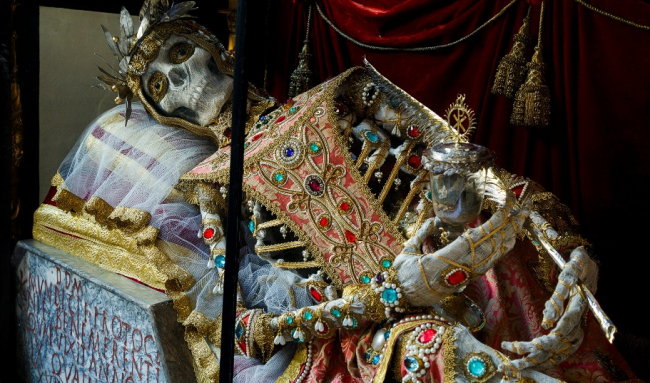
St. Munditia, in the church of St Peter in Munich, grasps a flask supposedly containing dehydrated blood as evidence of her martyrdom
Via: The Unnaturalist
Would you like to support Flashbak?
Please consider making a donation to our site. We don't want to rely on ads to bring you the best of visual culture. You can also support us by signing up to our Mailing List. And you can also follow us on Facebook, Instagram and Twitter. For great art and culture delivered to your door, visit our shop.
